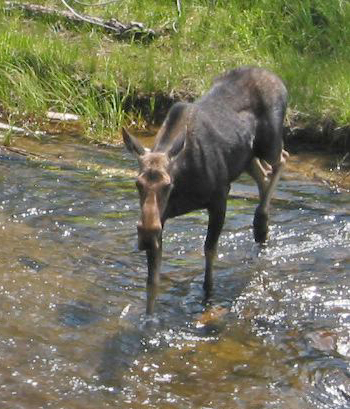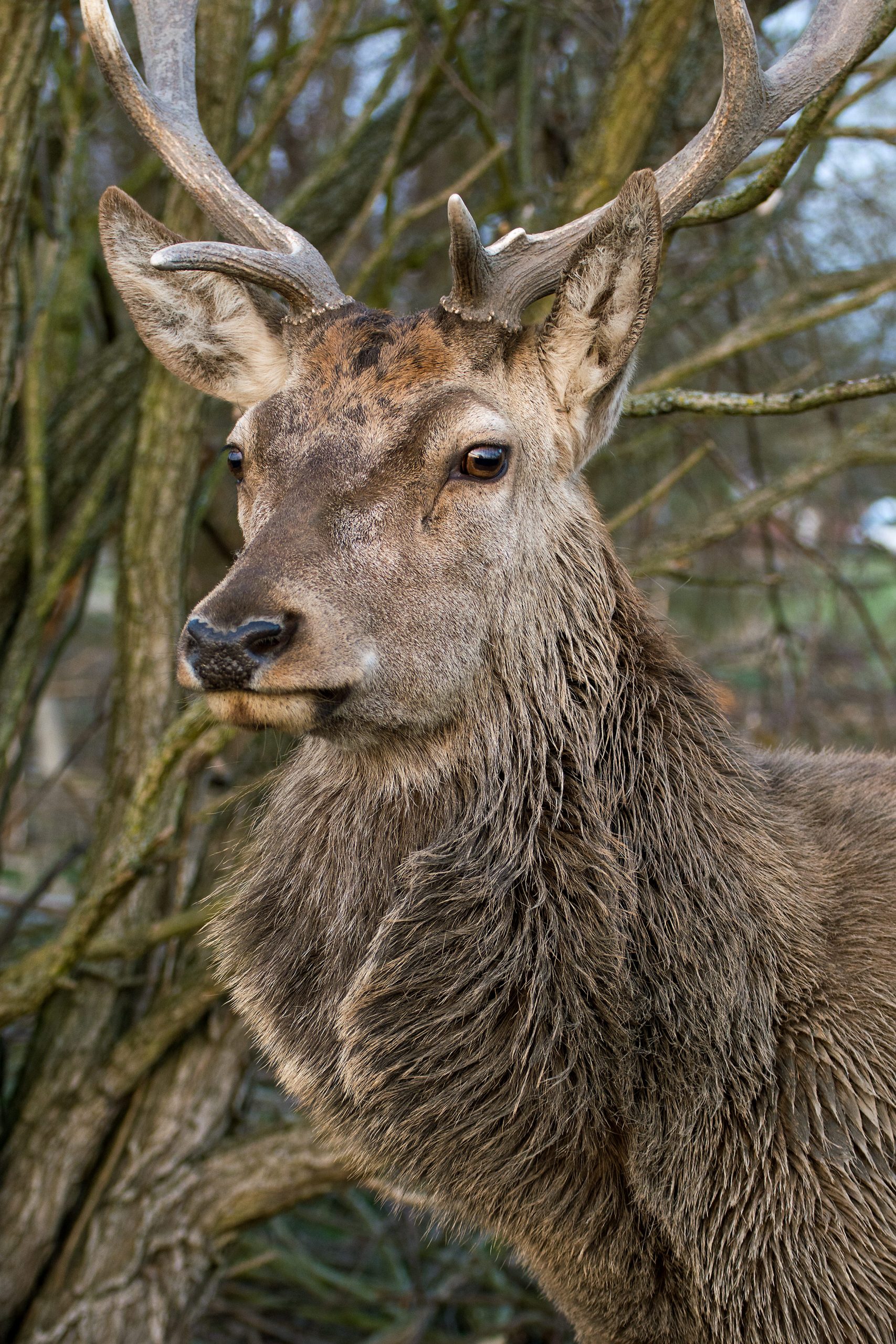|
Alceini
Alceini is a tribe of deer, containing the extant genus ''Alces'' and the extinct genera '' Cervalces'' and '' Libralces''. The only extant species in this tribe is the moose.Kahlke, H.D., 1990. On the evolution, distribution and taxonomy of fossil Elk/Moose. Quartarpalaontologie 8, 83–106. Genera and species *Extant genera **''Alces ''Alces'' is a genus of artiodactyl mammals, that includes the largest species of the deer family. There are two species in genus: the moose The moose (: 'moose'; used in North America) or elk (: 'elk' or 'elks'; used in Eurasia) (''Alces al ...'' *Extinct genera **†'' Cervalces'' **†'' Libralces'' **† '' Cervus sivalensis?'' References Capreolinae Mammal tribes {{eventoedungulate-stub ... [...More Info...] [...Related Items...] OR: [Wikipedia] [Google] [Baidu] |
Deer
A deer (: deer) or true deer is a hoofed ruminant ungulate of the family Cervidae (informally the deer family). Cervidae is divided into subfamilies Cervinae (which includes, among others, muntjac, elk (wapiti), red deer, and fallow deer) and Capreolinae (which includes, among others reindeer (caribou), white-tailed deer, roe deer, and moose). Male deer of almost all species (except the water deer), as well as female reindeer, grow and shed new antlers each year. These antlers are bony extensions of the skull and are often used for combat between males. The musk deer ( Moschidae) of Asia and chevrotains ( Tragulidae) of tropical African and Asian forests are separate families that are also in the ruminant clade Ruminantia; they are not especially closely related to Cervidae. Deer appear in art from Paleolithic cave paintings onwards, and they have played a role in mythology, religion, and literature throughout history, as well as in heraldry, such as red deer that app ... [...More Info...] [...Related Items...] OR: [Wikipedia] [Google] [Baidu] |
Alces Alces
The moose (: 'moose'; used in North America) or elk (: 'elk' or 'elks'; used in Eurasia) (''Alces alces'') is the world's tallest, Largest cervids, largest and heaviest extant taxon, extant species of deer and the monotypic taxon, only species in the genus ''Alces''. It is also the tallest, and the second-largest, Terrestrial animal, land animal in North America, falling short only to the American bison in body mass. Most adult male moose have broad, palmate ("open-hand shaped") antlers; other members of the deer family have pointed antlers with a dendritic ("twig-like") configuration. Moose inhabit the circumpolar distribution, circumpolar boreal forests or temperate broadleaf and mixed forests of the Northern Hemisphere, thriving in cooler, temperate areas as well as subarctic climates. Hunting shaped the relationship between moose and humans, both in Eurasia and North America. Prior to the early modern period, colonial era (around 1600–1700 CE), moose were one of many val ... [...More Info...] [...Related Items...] OR: [Wikipedia] [Google] [Baidu] |
Alces
''Alces'' is a genus of artiodactyl mammals, that includes the largest species of the deer family. There are two species in genus: the moose The moose (: 'moose'; used in North America) or elk (: 'elk' or 'elks'; used in Eurasia) (''Alces alces'') is the world's tallest, largest and heaviest extant species of deer and the only species in the genus ''Alces''. It is also the tal ... (''Alces alces'') and the fossil '' Alces gallicus'' (also known as the Gallic moose), that existed in the Pleistocene about 2 million years ago. Sometimes only one species is included in the genus, the modern moose (''Alces alces''), while the extinct Gallic moose is more often referred to the genus '' Cervalces'', since the structure of their antlers looks similar. "American moose" Sometimes the species ''Alces alces'' is divided into two separate species - European moose (''A. alces),'' and American moose (''A. americanus''). The American moose, contrary to its name, includes all subspecies ... [...More Info...] [...Related Items...] OR: [Wikipedia] [Google] [Baidu] |
Cervalces
''Cervalces'' is an extinct deer genus that lived during the Pliocene and Pleistocene epochs. ''Cervalces gallicus'' is either classified as a species of the related '' Libralces'', or an ancestral species to other members of ''Cervalces''. It lived in Europe from the Pliocene to the Pleistocene. '' Cervalces scotti'', the stag-moose, lived in Pleistocene North America. '' Cervalces latifrons'', the broad-fronted moose, and '' Cervalces carnutorum'' were found in Pleistocene Europe and Asia. The genus has been suggested to be paraphyletic and ancestral with respect to '' Alces'', the genus which contains the modern moose The moose (: 'moose'; used in North America) or elk (: 'elk' or 'elks'; used in Eurasia) (''Alces alces'') is the world's tallest, largest and heaviest extant species of deer and the only species in the genus ''Alces''. It is also the tal ..., and as such, some authors synonymise ''Cervalces'' with ''Alces''. References External linksStag Moose Image ... [...More Info...] [...Related Items...] OR: [Wikipedia] [Google] [Baidu] |
Moose
The moose (: 'moose'; used in North America) or elk (: 'elk' or 'elks'; used in Eurasia) (''Alces alces'') is the world's tallest, largest and heaviest extant species of deer and the only species in the genus ''Alces''. It is also the tallest, and the second-largest, land animal in North America, falling short only to the American bison in body mass. Most adult male moose have broad, palmate ("open-hand shaped") antlers; other members of the deer family have pointed antlers with a dendritic ("twig-like") configuration. Moose inhabit the circumpolar boreal forests or temperate broadleaf and mixed forests of the Northern Hemisphere, thriving in cooler, temperate areas as well as subarctic climates. Hunting shaped the relationship between moose and humans, both in Eurasia and North America. Prior to the colonial era (around 1600–1700 CE), moose were one of many valuable sources of sustenance for certain tribal groups and First Nations. Hunting and habitat loss hav ... [...More Info...] [...Related Items...] OR: [Wikipedia] [Google] [Baidu] |
Capreolinae
The Capreolinae, Odocoileinae, or the New World deer are a subfamily of deer. Alternatively, they are known as the telemetacarpal deer, due to their bone structure being different from the plesiometacarpal deer subfamily Cervinae. The telemetacarpal deer maintain their distal lateral metacarpals, while the plesiometacarpal deer maintain only their proximal lateral metacarpals. The Capreolinae are believed to have originated in the Middle Miocene, between 7.7 and 11.5 million years ago, in Central Asia. Although this subfamily is called New World deer in English, it includes reindeer, moose, and roe deer, all of which live in Eurasia in the Old World. Classification The following extant genera and species are recognized:Alvarez D. (2007) * Tribe Capreolini ** Genus '' Capreolus'' *** Western roe deer (''C. capreolus'') *** Eastern roe deer (''C. pygargus'') **Genus '' Hydropotes'' *** Water deer (''H. inermis'') * Tribe Alceini **Genus ''Alces'' *** Moose or Eurasian elk (' ... [...More Info...] [...Related Items...] OR: [Wikipedia] [Google] [Baidu] |
Libralces
''Libralces'' was a genus of Eurasian deer that lived during the Pliocene epoch. It is notable for its 2+ meter wide antlers, comparable in size to those of '' Megaloceros''. ''Libralces'' fossils have been found from France to Tajikistan, with the best-known examples being the French '' L. gallicus''. According to Jordi Agustí, ''Libralces'' was the ancestor of ''Megaloceros'', though most other authorities regard it as a relative of moose, '' Alces''. In the Pleistocene, there were three genera of Holarctic moose-like deer — '' Cervalces'', ''Alces'', and ''Libralces''. In contrast to modern ''Alces'', the Villafranchian ''Libralces gallicus'' had very long-beamed, small-palmed antlers and a generalized skull with moderately reduced nasals; the Nearctic The Nearctic realm is one of the eight biogeographic realms constituting the Earth's land surface. The Nearctic realm covers most of North America, including Greenland, Central Florida, and the highlands of Mexico. ... [...More Info...] [...Related Items...] OR: [Wikipedia] [Google] [Baidu] |
Tribe (biology)
In biology, a tribe is a taxonomic rank above genus, but below family and subfamily. It is sometimes subdivided into subtribes. By convention, all taxa ranked above species are capitalized, including both tribe and subtribe. In zoology, the standard ending for the name of a zoological tribe is "-ini". Examples include the tribes Caprini (goat-antelopes), Hominini (hominins), Bombini (bumblebees), and Thunnini (tunas). The tribe Hominini is divided into subtribes by some scientists; subtribe Hominina then comprises "humans". The standard ending for the name of a zoological subtribe is "-ina". In botany, the standard ending for the name of a botanical tribe is "-eae". Examples include the tribes Acalypheae and Hyacintheae. The tribe Hyacintheae is divided into subtribes, including the subtribe Massoniinae. The standard ending for the name of a botanical subtribe is "-inae". In bacteriology, the form of tribe names is as in botany, e.g., Pseudomonadeae, based on the ge ... [...More Info...] [...Related Items...] OR: [Wikipedia] [Google] [Baidu] |
Cervus Sivalensis
''Cervus'' is a genus of deer that primarily are native to Eurasia, although one species occurs in northern Africa and another in North America. In addition to the species presently placed in this genus, it has included a whole range of other species now commonly placed in other genera. Additionally, the species-level taxonomy is in a state of flux. Taxonomy Genus Until the 1970s, ''Cervus'' also included the members of the genera ''Axis'', '' Dama'', and '' Elaphurus'', and until the late 1980s, it included members of ''Rucervus'' and '' Rusa''. Species In the third edition of ''Mammal Species of the World'' from 2005, only the red deer (''C. elaphus'') and sika deer (''C. nippon'') were recognized as species in the genus ''Cervus''. Genetic and morphological evidence suggest more species should be recognized. For example, the species ''Cervus canadensis'' (elk/wapiti) is considered a separate species. Red deer species group Within the red deer species group, some sources h ... [...More Info...] [...Related Items...] OR: [Wikipedia] [Google] [Baidu] |


